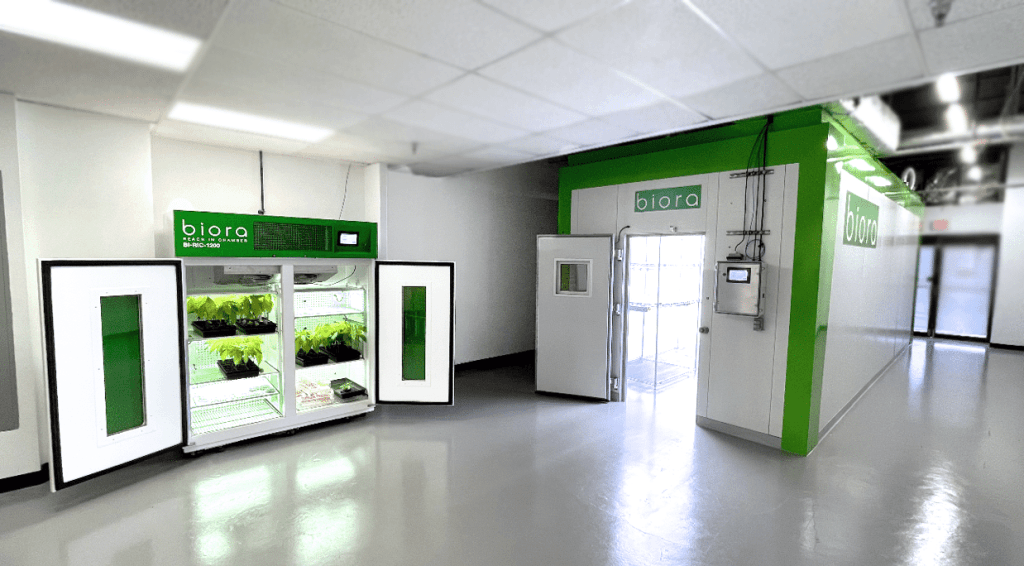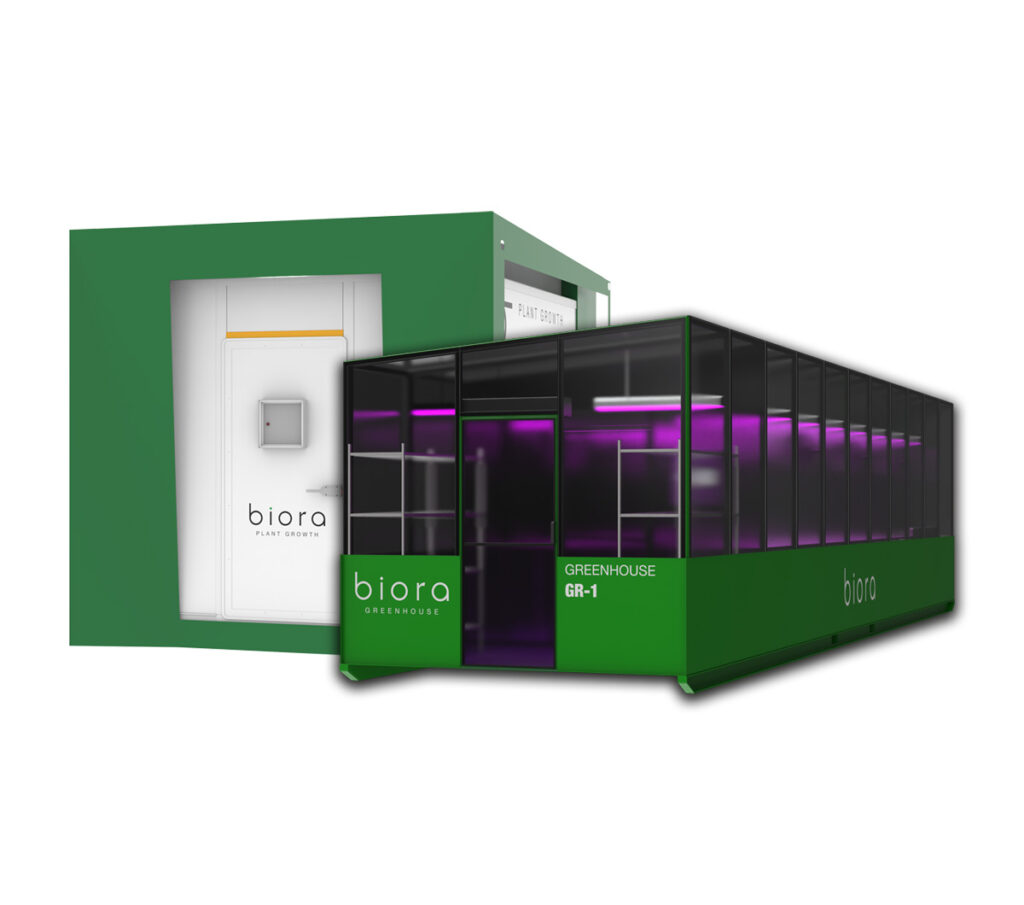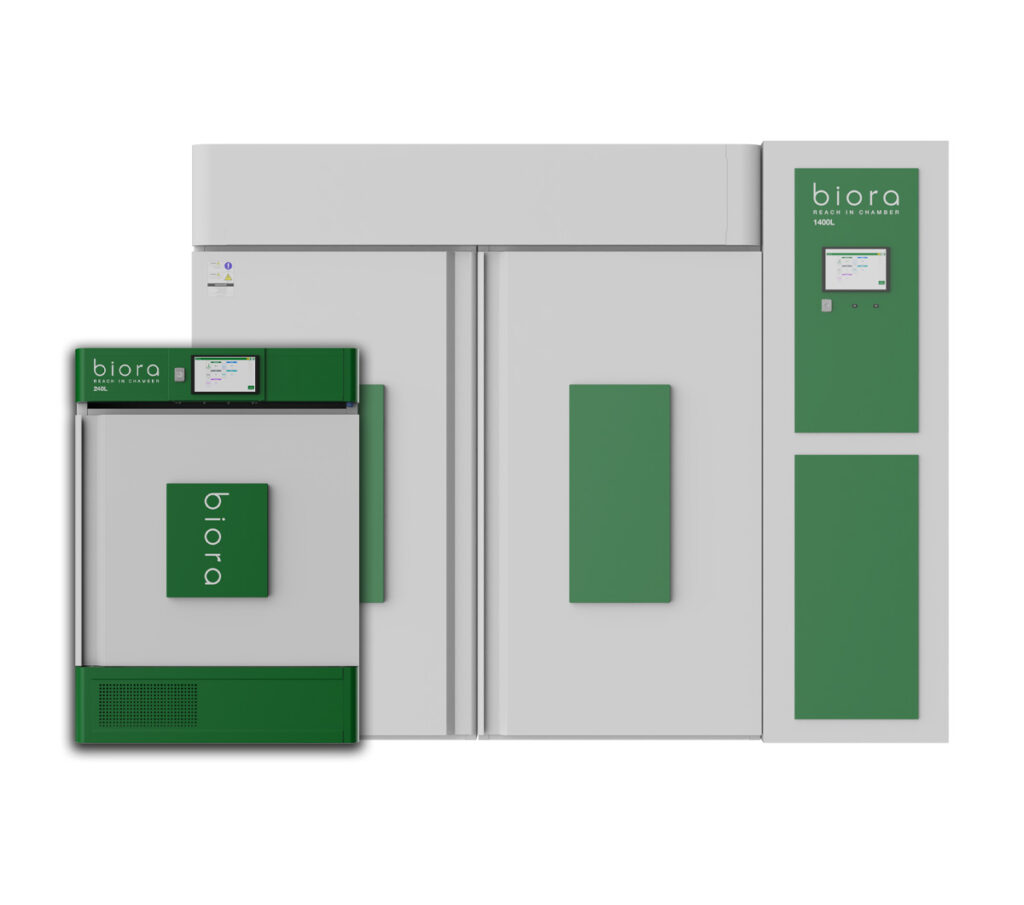Plant Growth Chambers
What Are Plant Growth Chambers?
Plant growth chambers are controlled environments, capable of catering towards a range of agricultural applications, from food cultivation to research studies.
Biora Plant Growth Chambers can be deployed to any environment to replicate a set of climatic conditions. This versatility, coupled with reliability and a proven track record, give Biora Plant Growth chambers the distinction of being a market-leading product.
In addition to world class lighting, atmospheric control and gas monitoring, our grow chambers also come equipped with an advanced HMI allowing fine manipulation of the internal conditions of the unit.
What Types of Plant Growth Chambers Are There?
The two most common types are walk-in and reach-in plant growth chambers.
Reach-in chambers are ideal for smaller laboratories with limited space due to their compact size and versatility. Despite their smaller size, these chambers will still prove to be of a high quality and meet the requirements of many scientific applications.
Walk-in chambers offer greater room to accommodate the needs of large plant specimens or large scale testing, and are commonly used in agricultural research.

Product Enquiry
Plant Growth Chambers Form
Plant Growth Chambers Form
"*" indicates required fields
Ideal for outdoor locations, the fully portable design of Biora Grow Chambers and Greenhouses eliminates the hassle of on-site installation and certification.
Available in a range of sizes, from 240L to 1400L, Biora Reach-In Plant Growth Chambers come with stainless steel shelving, as well as a range of premium lighting options.
Plant Growth for Research Purposes
Plant growth for research falls under two main categories – speed breeding and plant physiology research.
What is speed breeding?
Speed breeding is a process that shortens the breeding cycle and accelerates plant research activity through rapid development of new plant cultivars with favourable traits.
While traditional breeding methods take many years to develop, speed breeding, as the name suggests, speeds up the process of identifying and introducing favourable plant characteristics. This might include drought tolerance, yield, disease tolerance or physiology.
An addition to from optimising temperature and humidity, Biora Plant Growth Chambers can also be used to extend photoperiod (light exposure) a plant receives which can dramatically increase the breeding cycle of a plant. With optimised environmental conditions, it’s not uncommon to achieve 4-5 generations per year, compared to 1-2 in field-grown crops.
What is plant physiology research?
Plant physiology research is the study of the variation and structure of plants at a molecular and cellular level. This is important for the improvement of crop production and quality of food. It also enables a better understanding of a plants susceptibility to disease and other growth abnormalities. Climate change is a particular topical area of plant physiology research today, as research look at how plants cope with stresses relating to an increase in mean temperatures (heat stress) and reduced rainfall (drought tolerance). The goals of any plant breeding program are often driven by the outcomes of plant physiology research.
Plant Growth Chambers FAQ
Plant growth chambers are specialised cabinets designed to create precision environmental conditions, such as controlled temperature, humidity, and light intensity. These chambers facilitate plant cultivation by replicating various environmental factors, making them essential for agriculture research and plant pathology studies.
Temperature and humidity are critical environmental controls in plant growth chambers. By precisely managing these conditions, the chambers ensure optimal seed germination rates and healthy plant growth, allowing researchers to simulate a wide range of environmental conditions for their studies.
Yes, our plant growth cabinets are versatile and can be tailored to accommodate tall plants. With adjustable shelving and customisable chamber heights, we ensure that even tall plant species have the space and conditions they need for proper growth and development.
Light intensity and spectrum are crucial for plant development. Our growth chambers offer shelf lighting options that allow for the precise control of light intensity and spectrum, ensuring plants receive the necessary wavelengths for photosynthesis, growth, and developmental processes.
Controlled environments, such as those provided by plant growth chambers, are fundamental in agriculture research and plant pathology. They allow scientists to study plant responses to environmental factors, disease resistance, and crop improvement techniques under a controlled environment.
Multiple chambers enable researchers to conduct parallel experiments, comparing different environmental conditions, such as variations in temperature, humidity, light, and other factors, on plant growth. This is essential for comprehensive agriculture research and understanding plant responses to environmental changes.
We offer comprehensive preventative maintenance programs to ensure your plant growth chambers operate efficiently and accurately. These programs include regular inspections, calibration of environmental control systems, and replacements of any worn components, ensuring long-term reliability and precision.
Humidity control in plant chambers is vital for maintaining plant health and ensuring accurate research outcomes. Precise humidity conditions prevent plant stress, reduce the risk of disease, and allow for consistent study results, especially in plant pathology and seed germination studies.
Absolutely. Our growth chambers are designed for flexibility and precision, allowing researchers to tailor environmental conditions to specific needs. Whether it’s adjusting temperature, humidity, light intensity, or the light spectrum, our chambers provide the control needed to study the impact of various environmental factors on plant growth.
Controlled environments offer the ability to create consistent and optimal conditions for seed germination, free from external environmental fluctuations. This precision accelerates germination processes, improves germination rates, and ensures uniform growth, making it easier to study the effects of different variables on seed development.


